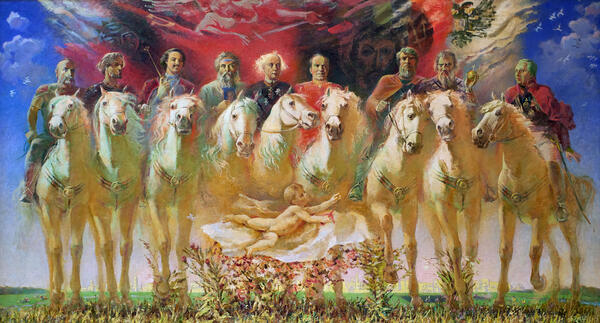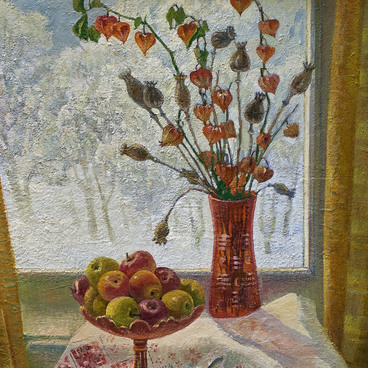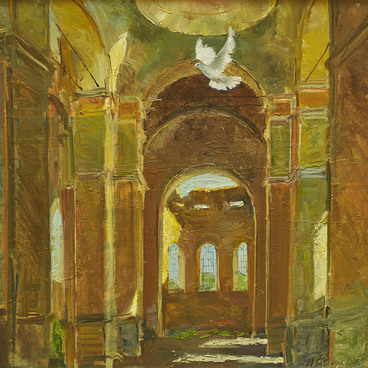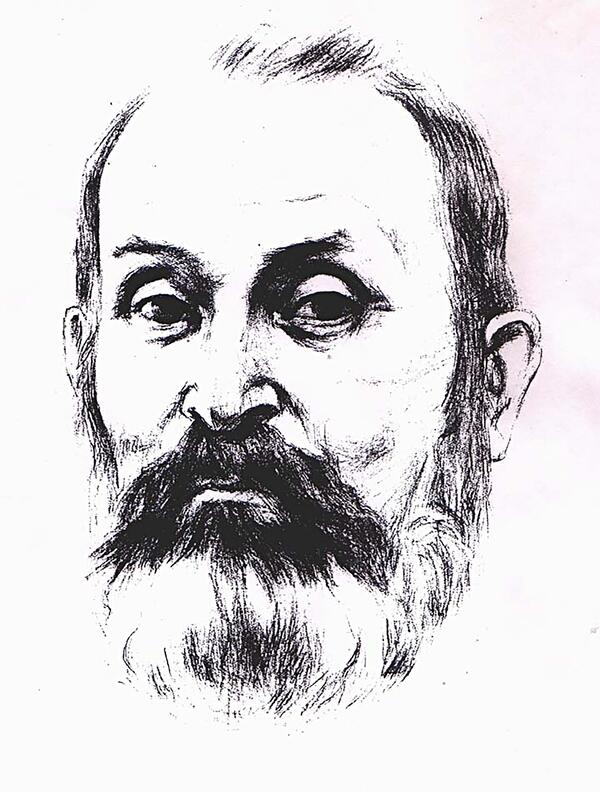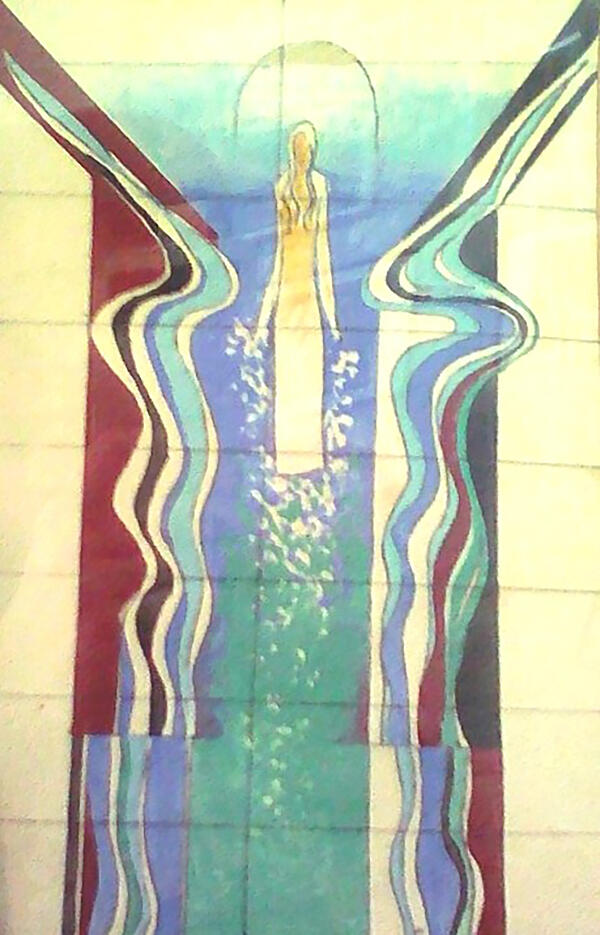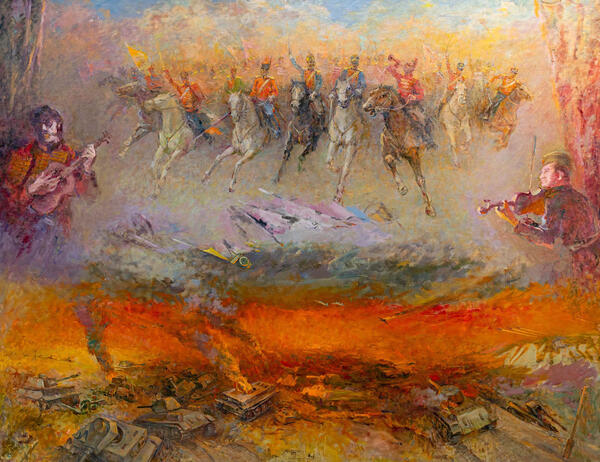The largest historical canvas ‘Parade of Commanders’ from the Valuy Museum of History and Art collection was painted jointly by the Starooskol artists, members of the Union of Artists and Architects of Russia Valery Golyshev and Pavel Shlyapnikov.
They worked for about 40 years as a creative dyad and created a considerable number of works on historical themes and narrative paintings. They have paintings dedicated to Joseph Stalin, Vladimir Lenin, Georgy Zhukov, Mikhail Gorbachev, and many other famous personalities.
Artists Valery Golyshev and Pavel Shlyapnikov gained people’s recognition and also won the love of art lovers for the honesty and truthfulness of the stories they depicted. The artists were awarded Honorary badges of the Zhdanov city Committee and the Regional Committee of the Komsomol, diplomas of the Department of Culture of the Administration of the Belgorod Region. In 2012, both were awarded Medals “For Merits to the Land of Belgorod” 2nd class.
The “Parade of Commanders” in canvas is one of the largest in the museum: its size is three by one and a half meters. In the foreground of the painting, the artists depicted a row of riders on white horses. These are people who lived at different times and different epochs. Each of them left a mark on Russia’s history, namely, contributed to the state’s development and formation. From left to right: Prince Svyatoslav, Prince Alexander Nevsky, Emperor Peter the Great, the Slavic Blacksmith God Svarog, commander and founder of Russian military theory Alexander Suvorov, Marshal of the Soviet Union Georgy Zhukov, Prince Dmitry Donskoy, Tsar Ivan the Terrible and commander of the late 18th century Mikhail Kutuzov.
The riders in the picture symbolize the secure protection of the state borders from enemy attacks, and the baby in the foreground is the continuity of generations. In the upper part of the canvas, a scarlet banner flutters in the sky, and a little to the right, on a white background, a double-headed eagle is depicted, which is a symbol of Russian statehood. The horse’s harness is also symbolic: the artists executed it in the Patriotic colors of the St. George ribbon — black and orange. Meadow grass is under the hooves of horses, and in the distance, boundless steppe goes to the horizon — Russian plain.
They worked for about 40 years as a creative dyad and created a considerable number of works on historical themes and narrative paintings. They have paintings dedicated to Joseph Stalin, Vladimir Lenin, Georgy Zhukov, Mikhail Gorbachev, and many other famous personalities.
Artists Valery Golyshev and Pavel Shlyapnikov gained people’s recognition and also won the love of art lovers for the honesty and truthfulness of the stories they depicted. The artists were awarded Honorary badges of the Zhdanov city Committee and the Regional Committee of the Komsomol, diplomas of the Department of Culture of the Administration of the Belgorod Region. In 2012, both were awarded Medals “For Merits to the Land of Belgorod” 2nd class.
The “Parade of Commanders” in canvas is one of the largest in the museum: its size is three by one and a half meters. In the foreground of the painting, the artists depicted a row of riders on white horses. These are people who lived at different times and different epochs. Each of them left a mark on Russia’s history, namely, contributed to the state’s development and formation. From left to right: Prince Svyatoslav, Prince Alexander Nevsky, Emperor Peter the Great, the Slavic Blacksmith God Svarog, commander and founder of Russian military theory Alexander Suvorov, Marshal of the Soviet Union Georgy Zhukov, Prince Dmitry Donskoy, Tsar Ivan the Terrible and commander of the late 18th century Mikhail Kutuzov.
The riders in the picture symbolize the secure protection of the state borders from enemy attacks, and the baby in the foreground is the continuity of generations. In the upper part of the canvas, a scarlet banner flutters in the sky, and a little to the right, on a white background, a double-headed eagle is depicted, which is a symbol of Russian statehood. The horse’s harness is also symbolic: the artists executed it in the Patriotic colors of the St. George ribbon — black and orange. Meadow grass is under the hooves of horses, and in the distance, boundless steppe goes to the horizon — Russian plain.

